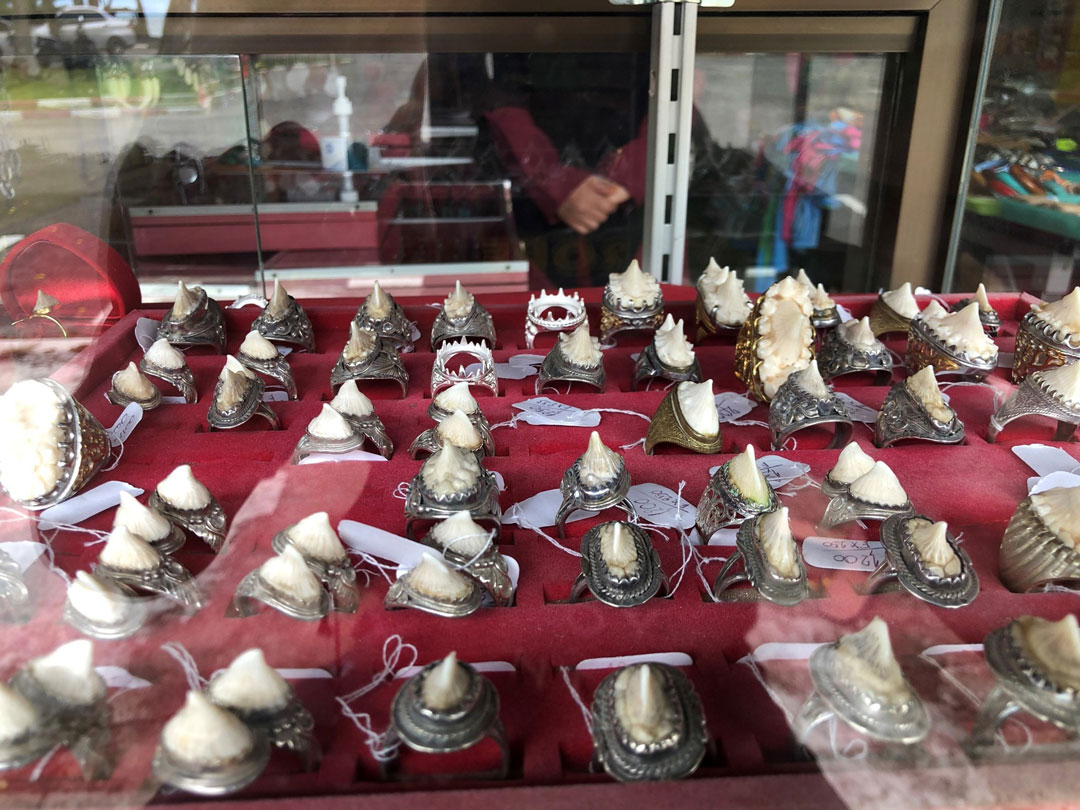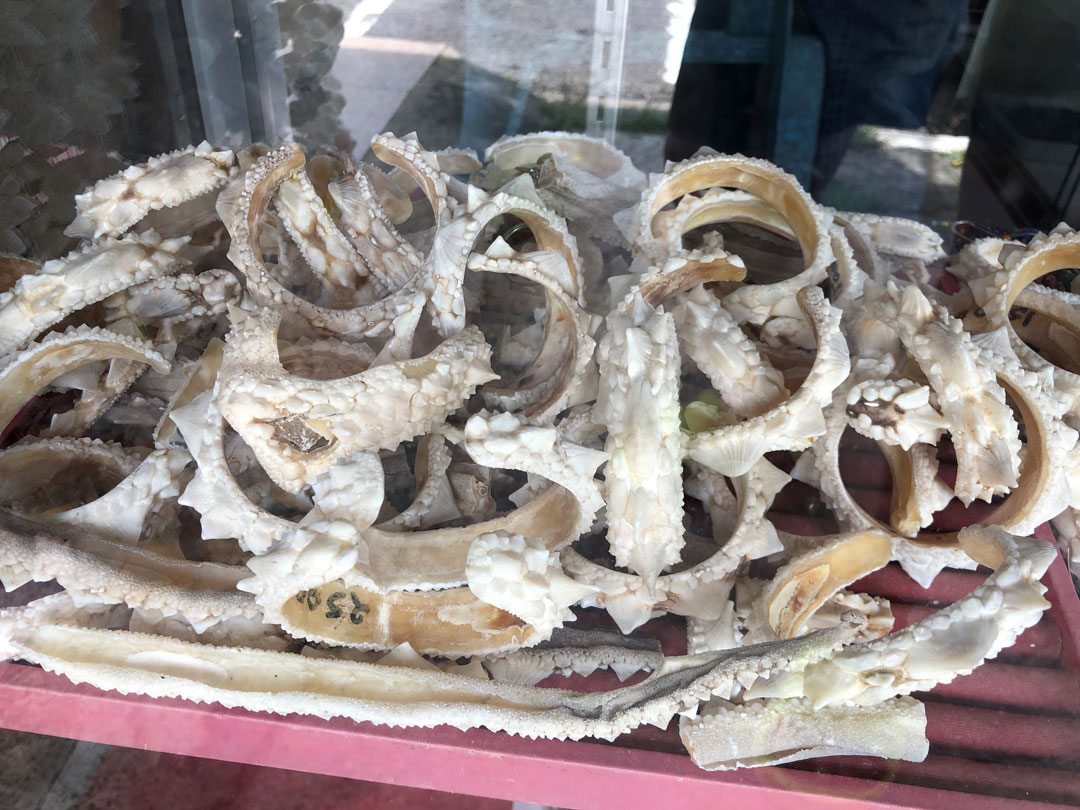Of permits, products, and parks
In my previous blog, I gave a background of how this project came to be and ended with the hopeful statement that there would be some exciting survey news to share! Though we have not been able to cover all the ground we had hoped for, the determination of our research assistant, Hannares, has revealed some interesting results. As well as being listed on CITES Appendix II in 2019 (requiring international trade to have proof of sustainability), the bowmouth guitarfish became a protected species in Thailand in 2018. This banned the landing of the ray and prohibited the sale of any unregistered parts – registration closed in November 2018, and since then, any unregistered possession or trade is prohibited.
One of the main priorities of this project is to understand the legality and visibility of trade and what traders and sellers of bowmouth products understand the laws to be. Our interviews have focused on shop vendors so far, and all those surveyed to date are aware of the laws in place. In addition, all claim to have permits (though permits from a recent survey from Krabi National Park had expired in October 2021).

Bowmouth guiatarfish rings in Krabi National Park. Photo © Hannares Haripai
The permit claims are a bit perplexing to us on the project. Because: A) The registration requirement is specific to each individual product, not just for the shop; B) Since registration was finalized near the end of 2018, a valid permit would suggest all products are over three years old. This is really important information because it can help us tease out if there is a potential miscommunication between the wildlife act and vendors or if the issue is related to a disregard for regulations!
Survey responses have suggested a general sense of comfort in selling potentially illegal items. While respondents comment that, in theory, a fine could be applied, they also say that in practice, this does not occur. Whether this is due to a lack of enforcement, monitoring, or a combination, we hope to determine. Our recent findings of sales inside a National Park seem to suggest the latter. With further surveys and knowledge exchange between various stakeholders, we will develop a deeper understanding of this complex issue.

More bowmouth guitarfish products for sale in Krabi National Park. Photo © Hannares Haripai
For our next investigation, Hannares will travel to traders in the south of Thailand. Here, we aim to get information at a different part of the supply chain, those that sell the raw product to the shop vendors. An important question we want to answer: Are the parts coming from Thailand or outside? In other words, where are the bowmouth guitarfish being fished and landed? We have heard from several survey respondents that the thorns are coming from Indonesia – if true, this will introduce another layer (and more questions!) regarding permits and legality. Stay tuned!
